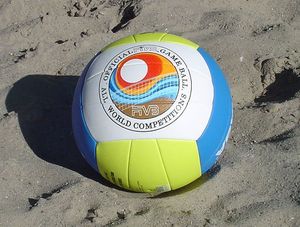This is a series of tips & tricks I’ve developed to help me win my Baseball fantasy leagues more often than not over the years. These aren’t earth shattering strategies but rather the finer details to keep in mind over the next 6 month, day to day battle we loving call the Baseball Season.
Our focus in this article is “Assessing Your Draft for Weaknesses.” In a rotisserie league it is essential that you create balance for your team. You don’t have to lead every stat category and you certainly cannot punt categories and assume you can be champ while only securing 1 point for any given stat. The goal is to be in the upper half of each of your leagues stat categories and hopefully in the top three of several of those.
I try not to over-complicate my draft by consciously trying to draft guys based on the specific stats they are projected to bring in for the year. I draft the best players available as my turn comes around and fill my positions. It may turn out I end up with several guys who are going to fill up the HR category for me and only couple guys who will be in position to help me earn SBs. The adjustments can be made after the draft, before the season begins.
You should assess your team once they have been drafted and add up the stats that you project your core offensive starters and pitching staff to produce over the year. You can use your own projections or base them on any number of preferred Fantasy Baseball projections found around the internet or in magazines. Once you’ve totaled your projections for each of your league’s stat categories it is time to see how they match-up to the numbers it’s going to take to win each category for the year.
To get an idea of how much production I’m going to need in each category I have gone back through my leagues for the last 5 years and compiled averages for what it took to win each category for each league. I typically play standard 12 team 5×5 Rotisserie leagues: R, HR, RBIs, SB, AVG. and W, K, SV, ERA, WHIP. I start all 8 offensive positions plus a Utility spot with a maximum of 162 games played at each. The pitching staff has a maximum of 1250 innings pitched.
Going back the last 5 years my averages to win for each category in this league setup looked like this:
Runs: 825 HR: 217 RBIs: 805 SB: 146 AVG: .289
W: 84 K: 1,117 SV: 132 ERA: 3.46 WHIP: 1.20
Create your projections based on your own unique league setup and chosen categories. This year I’m playing in the adjusted Yahoo! Fantasy Baseball default settings which has added a second Utility spot as well as upped the Pitching staff to 1,400 innings. I adjusted my projections accordingly which now look like this:
Runs: 916 HR: 240 RBIs: 894 SB: 161 AVG: .289
W: 94 K: 1,251 SV: 132 ERA: 3.46 WHIP: 1.20
These numbers account for another 162 games of production from the extra Utility position as well as an extra 150 innings from the pitching staff. Notice AVG, ERA, and WHIP haven’t changed as they are based on Averages. Additionally SVs I have kept the same because there is still the same limited number of closers to go around your fantasy league. Also if the ‘year of the pitcher’ trend of the last couple years continues, ERA and WHIP may end up considerably lower.
When you total your projections keep in mind that they are based on how many At Bats an offensive player or how many Innings a pitcher is also projected to get for the year. For example Matt Kemp may be projected to get 600 at bats for the season where Troy Tulowitzki, who has a history of an injury or two in most seasons, may be projected a few less at bats like 560. Their projected numbers will be affected accordingly. Your goal with your fantasy team however is to get a 162 games from each position to and 1,400 innings from your pitchers to maximize your stat accumulations. This can be accomplished with a strong bench and good position diversity throughout your lineup. This article on “position diversity” can help you in accomplishing this.
In comparing my own team’s projected stats too the stat averages for each year I determined my team was most likely to be deficient in AVG while being very strong in SB in its current setup coming out of the draft. Additionally I noted I needed an extra 6th Starting Pitcher as compared to the typical 5 Starting Pitchers I have used in the past, this was to account for the additional 150 inning pitch limit in my league this year. I can look to trade one of my stolen base producers to a fellow manager deficient in the category for one of his players that can help me with my batting average and I have already used one of my bench positions to pick up a sixth starter.
Notice this is by no means a sure-proof way to determine the performance of your team over the coming months; it’s merely a projection like any other. Players can get injured or under perform as well as have unforeseen breakout years. Use this system as a tool to determine any major deficiencies your drafted roster may have so you don’t start yourself off in a hole that you won’t be able to dig out of by the time it becomes all-too apparent sometime in mid-June.



